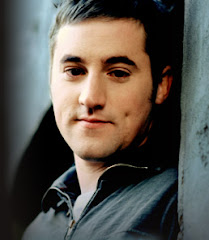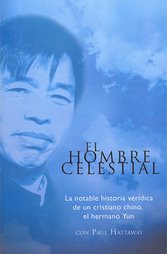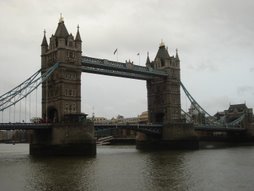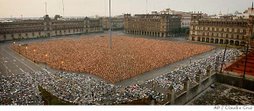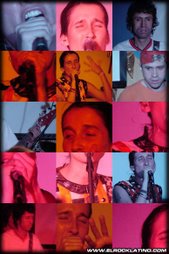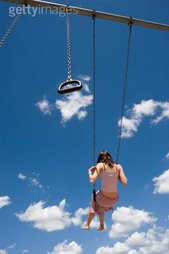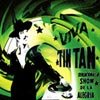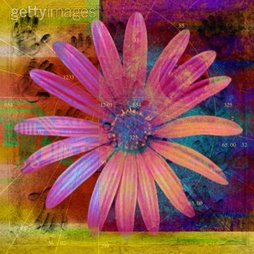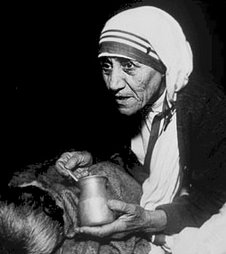En la fiesta semi sorpresa de Iris. Con iris y con Paco.
Este es el mejor blog del mundo. Esta dedicado con todo carino para los que estan siguiendo desde Mexico o cualquier parte del mundo la Cecinovela en Inglaterra y ahora en México. En la nueva temporada tendremos aventuras en La Soledad, Compa Profesionales, vida laboral, titulación, amigos, familia y mucho mas nuevos y mejores enredos. No se lo pierdan. Para ver las fotos en su resolucion completa vayan a http://www.flickr.com/photos/mexicanaenuk/
Pues ayer hice el tan esperado examen de certificaciond e Ingles del tec, el resultad lo sabre el 3 de Octubre, asi que los mantendré actualizados, y pues para aquellos que quieren saber de que trato, el texto principal era el que viene abajo y de ahi habian varias preguntas como de comprension con respecto a lo leido y tambien tuve que hacer un como resumen de las ideas principales. Pero me parecio bastante interesante el articulo, hasta venian cosas de Inglaterra.
He aqui el article
Solar Technology - The Sun As Our Energy Supplier
There are different ways in which the sun’s power can be used. Solar thermal energy is obtained by converting solar heat into useful heat, for warming shower water or heating, for example. Photovoltaics means converting solar radiation into electrical energy. In order to do so, individual solar cells are combined to create solar modules.
Solar cells consist of a semi-conductor material (generally silicon) in which light irradiation is separated into negative (electrons) and positive charge carriers. An electric field created by selected imbalances in the semi-conductor separates the charge carriers. The result is a lack of electrons on one side and a surplus of them on the other. This electrical tension can be collected with a metal contact on the upper and lower sides.
The French physicist, Alexandre Becquerel, discovered the photovoltaic effect, by which pairs of electrical charge carriers are separated when hit by sunlight, in 1839. In 1884, the American Charles Fritts described the electromotive force in illuminated selenium and constructed the first solar cell. Its effectiveness was, however, minimal.
The scientific explanation for the fact that light can be converted directly into electricity was provided by Albert Einstein in 1905. His essay on the law of the “photoelectric effect” from 1905 supplied the foundation for modern photovoltaics.
In the end it was a coincidence which led to the modern solar cell. Calvin Fuller and Gerald Pearson were actually developing the transistor and created the solar cell almost as a by-product of an experiment. Together with their colleague Darryl Chapin, the researchers presented their silicon-based "Solar Energy Converting Apparatus" in 1953. The breakthrough had been made. As early as 1958, the first satellite fitted with a photovoltaic energy device was floating through space. Today, energy supplied by photovoltaic modules is standard for spacecraft.
At first, photovoltaics remained an expensive form of technology used only for special applications. But then the oil crisis in 1973 and the Chernobyl reactor catastrophe in 1986 spurred on the search for new, regenerative sources of energy. The conversion of sunlight into electricity and warmth experienced a real boom and, finally, became affordable for private households.
Nowadays, thin-film solar cells are being produced. They are particularly cost-effective as only very little silicon is required to make them. The cells are vapor deposited onto a medium such as glass and can then be installed easily on facades for instance.
Wind power - From Air Currents to Electrical Currents
Wind energy plants work on the principle of aerodynamic force. The wind striking the rotor blade creates positive pressure below the sail, whilst there is negative pressure above the sail. This pressure differential generates a lifting force which modern wind energy plants utilize for movement and thus for electricity production.
Force 3 winds, which are common over the North Sea, the southern tip of South America, the Australian island of Tasmania and the Great Lakes in the north of the USA and other areas, are especially advantageous for wind energy plants. It merely remains to harness this wind. Measurements made by US-American researchers in 8,000 locations have shown that we could meet the world’s electrical energy requirements with wind power – on the condition that we use it more effectively.
In February 2005, the largest wind energy plant in the world began operation in Brunsbüttel in Germany. The 183 metre high giant "REpower 5M" has a rotor diameter of 126 metres which sweeps across an area of two football fields per revolution. The plant can provide up to five megawatts of electricity which is enough to supply around 4,500 households – an achievement which is unmatched worldwide.
Suitable areas for large wind power stations are, however, scarce – therefore great hopes are being placed in wind power plants at sea. Worldwide, some offshore wind parks have now been set up, for example in Denmark, Sweden, the Netherlands, Germany and England. The fact that the energy yield at sea is around 50 percent higher is due, amongst other factors, to the fact that water surfaces offer almost no friction to the wind. From a technical point of view, however, the offshore plants are considerably more costly than wind power stations on land because they have to brave high waves, storms and ice. This makes them around 60 percent more expensive than comparable onshore wind parks. In addition, the offshore power stations produce low frequency sounds which could drive away birds, fish and marine mammals.
The idea of a flying wind park sounds like something from science fiction. It would have two rotors and produce electricity at a height of five kilometres where strong, regular winds blow. The flying power station would be held by a cable which would also transport the electricity gained to the ground. It would take to the skies in a way similar to a kite and remain stable once in the air. However, it is still wholly uncertain whether this kind of airborne wind park will ever be built.
Water Power – Energy from Rivers and Seas
The first hydroelectric power stations for the production of electricity were built in England as early as 1880. Today there are river power plants, storage power plants, pumped storage power plants, tidal power stations and wave power stations. But as different as these various types of hydroelectric power station are – they all function in similar ways: a power station generally consists of a weir or dam which stores the water in front of the power station or in a reservoir located on higher ground. From here, the water enters the supply pipe or penstock via the intake. Depending on the type of the turbine, either potential or kinetic energy drives a turbine which is connected to a generator. This finally transforms the mechanical energy into electricity. If the water has passed the turbine it is channeled back into the natural course of the river or the equalising reservoir.
Modern “water wheels” such as the Francis or Pelton turbine can convert almost all of the water power into mechanical energy. They can attain 95 percent efficiency.
Wave power stations
The power of the seas can also be used to produce energy. A wave power station on the Scottish island of Islay has been providing electricity since 2001. The technology is actually quite simple: it is not the water which creates energy but the air which the water displaces. The plant consists of a pipe-shaped reservoir which reaches under the surface of the water. The water level rises and falls with the waves and the air in the pipes is pushed upwards or sucked downwards. The air flow which this creates powers the Wells turbines, named after their inventor. These turbines are remarkable in that they turn in the same direction whether there is an inflow or outflow of air. Optimum use of wave power is achieved as the turbo generator driven by the turbines also supplies electricity when the waves subside. In this way, the “Limpet 500” produces 500 kilowatts – enough for around 400 households.
Posted by
Ceci
at
12:14 PM
0
comments
![]()
Ultimamente he escuchado mucho de Amextra, pero que es Amextra???
Es una Asociación Civil que opera sus propios proyectos regionales, en los que se establece una presencia y acompañamiento a comunidades marginadas rurales y urbanas, con procesos de transformación integral. Han ofrecido un servicio continuo a comunidades marginadas en México, durante los últimos 21 años. Estado presentes en 11 estados del país, en 300 comunidades diferentes, acompañando a más de 75 mil personas en procesos de transformación integral, y con el apoyo de más de 800 promotores. AMEXTRA significa Asociación Mexicana de Transformación Rural y Urbana.
Amextra fue creada en 1984 en la ciudad de México. Surgió de un grupo de universitarios quienes querían dar algo importante a su sociedad. Empezaron a trabajar para apoyar a los grupos marginados del país, especialmente en zonas de poca o nula atención de otras organizaciones sociales y gubernamentales. Creyendo firmemente en la idea de que la filosofía de la Transformación “Cambia tu manera de pensar para que cambie tu manera de vivir” y una metodología participativa, son imprescindibles para la superación de la pobreza en México.
Compañerismo Estudiantil ha empezado a enviar voluntarios a ayudar en Lomas de San Isidro, Chicoloapan,Estado de México, que una vez al año van a ser transformados por medio de la renovación de su entendimiento.
El objetivo principal de Amextra es promover la transformación integral de campesinos, indígenas, mujeres, jóvenes y niños que viven en áreas marginadas rurales y urbanas, y que reciben poca atención de las instituciones públicas y privadas en México. Entendemos la transformación como un proceso que produce mejores condiciones y calidad de vida en las familias y sus comunidades.
Principios fundamentales:
Transformación integral: Todas las personas son valiosas en si, sin distinción alguna. Pero necesitamos hacernos conscientes de lo que somos y tenemos, que independientemente de nuestra condición social, siempre tenemos algo que compartir. La Transformación debe tocar todas las esferas del ser humano.
Participación comunitaria: Todas las personas tienen dones y el potencial para desarrollarlos comunitariamente. Los participantes van tomando gradualmente conciencia y poder sobre las decisiones y responsabilidades del proceso de cambio, fortaleciendo las relaciones y el sentido de valores comunitarios.
Servicio Incondicional: Las acciones de servicio revelan el carácter de personas y comunidades en procesos de transformación. El servicio así no es solo un acto de buena voluntad, una respuesta a nuestros sentimientos de compasión, o de ganar adeptos a una causa, sino revelación natural del carácter de personas en transformación.
“No servimos porque ya estamos transformados, sino que somos transformados cuando servimos”.
Posted by
Ceci
at
5:51 PM
0
comments
![]()
Hace 2 años fui a VIVE 2005 en Jalisco Mexico, y se presentó uno de los mejores grupos de musica latinoamericana que he escuchado. Se llama SAL Y LUZ, el vocalista es Joel Sierra, quien salió de las filas del Compañerismo Estudiantil. Recientemente se presentaron en Cintermex un evento organizado por Luis Palau.
Sal y Luz nació en Monterrey, México en el año 2003. Viene de la Comunidad Bautista Yiré. Sal y Luz es producto de la reflexión sobre lo que significa seguir a JesuCristo en el contexto de pobreza e injusticia que compone la realidad latinoamericana. Su propuesta musical es lo que hemos llamado "artesanía urbana": una fusión de los sonidos folclóricos de las tierras de nuestro continente con los sonidos contemporáneos de la realidad de las ciudades de todo el mundo.
Sus letras van dirigidas a la conciencia universitaria de nuestros pueblos y buscan despertar a la iglesia para que ame a Dios también con toda su mente, además de con toda su cultura también. Sal y Luz ha tocado en congresos y reuniones de jóvenes, en lugares públicos y en iglesias, y siempre está buscando nuevas oportunidades de diálogo con el mundo y con la iglesia.
Otro integrantes del grupo son Maricarmen Olmedo, Angel Baez, Lucía Bueno, Saul Mendoza, Abraham Lara, Ana G. Luna, Alejandro Gonzales y Samuel Niño.
Este es un video de cuando cantaron en Londres.
Posted by
Ceci
at
8:40 AM
0
comments
![]()
Tocaras a alguien con tu vida
abrías camino con tu luz
aunque estés postrado y con heridas
llevaras a alguien a Jesús
sacaras a alguien de la muerte
tus palabras le alcanzaran
aunque sientas que a pocos le importe
tus esfuerzos fructificaran
la Palabra que quemo tu boca
es la chispa que el viento llevo
sin que puedas saber a quienes toca
un gran fuego se encenderá
el Espíritu lo encenderá
El sendero en que ahora caminamos
no se debe andar en soledad
uno al otro nos necesitamos
construimos la comunidad
la Palabra que quemo tu boca
es la chispa que el viento llevo
sin que puedas saber a quienes toca
un gran fuego se encenderá
el Espíritu lo encenderá
El sabado fui a La Soledad, que es el proyecto de servicio de Compa Profesionales de Toluca, fue super padre, es un lugar hermoso con un paisaje muy bonito y con gente muy buena onda. Los niños son muy amigables y entusiastas.
Posted by
Ceci
at
5:51 PM
0
comments
![]()
Posted by
Ceci
at
8:49 AM
0
comments
![]()

Ayer vi la pelicua Agua (Water) de Deepa Mehta,
La historia transcurre en 1938, en la India colonial, en pleno movimiento de Independencia liderado por Mahatma Gandhi.
Según las creencias hindúes, cuando una mujer se casa, se convierte en la mitad del hombre. Por lo tanto, si él muere, se considera que la mitad de la esposa ha muerto. Los libros sagrados dicen que una viuda tiene tres opciones: Casarse con el hermano más joven de su marido, arder con su marido o llevar una vida de total abnegación.
La pelicula va mas o menos así: Se celebra una boda que bien podría ser un entierro: casan a Chuyia (Sarala), una niña de 8 años, con un moribundo que fallece esa misma noche. Se quema su cuerpo en la orilla de un río sagrado y Chuyia se prepara para el destino que han escogido para ella. Se le afeita la cabeza e ingresa en un ashram (una como casa) para viudas donde deberá pasar el resto de su vida, convertida en un altar viviente consagrado a la memoria del fallecido.
Pero el ashram, gobernado por una especie de enorme gárgola llamada Madhumati (Manorma), es una farsa que controla la vida de las reclusas. El "chulo" local le trae ganja (marihuana), que fuma con placer, y ella le entrega a las viudas más jóvenes para que se prostituyan hasta que pierden su atractivo y dejan de ser lucrativas.
El agua es una constante en la película, no sólo como metáfora, sino también como instrumento. A la orilla del río, Kalyani (Lisa Ray) conoce a Narayan (John Abraham), un joven idealista seguidor de Gandhi, hijo de brahmanes, la casta social más alta de la India.
Estudia derecho, está entusiasmado con la revolución social pregonada por Gandhi y más que dispuesto a rechazar los límites impuestos por una tradición secular. Con Chuyia actuando como mensajera, su imposible relación empieza a florecer.
Notas de la directora
Algunas imágenes se graban en la mente de forma indeleble. Hay una imagen que lleva diez años conmigo, la de una viuda en la ciudad santa de Varanasi en India. Doblada, el cuerpo arrugado por los años, el cabello blanco rasurado, iba de un lado a otro a cuatro patas, buscando desesperadamente algo que había perdido en la orilla del Ganges. Su tristeza era obvia mientras buscaba entre la muchedumbre de peregrinos. Nadie le hacía caso, ni siquiera cuando se sentó y empezó a llorar, consciente de que no encontraría lo que había perdido.
La imagen de esa viuda, sentada en cuclillas, abrazándose las rodillas, la cabeza inclinada ante su derrota, se me quedó grabada en la mente y me dio la idea para el guión que, diez años más tarde, se convertiría en "Agua".
Estaba en Varanasi dirigiendo un episodio de "Las aventuras del joven Indiana Jones", una serie de televisión de George Lucas. Por la mañana, solía pasear por la orilla del Ganges. Entre los peregrinos había viudas hindúes condenadas a una vida de privaciones por culpa de unas creencias desfasadas. Venían a Varanasi a morir. Si morían en la orilla del río sagrado, tenían la salvación asegurada.
A pesar de que soy hindú, las viudas seguían siendo un misterio para mí hasta que empecé a investigar para escribir el guión de "Agua", la tercera película de mi trilogía después de "Fuego" y "Tierra". Su situación me conmovía profundamente. Estas mujeres viven de acuerdo con el contenido de un texto religioso de más de dos mil años de antigüedad.
"Agua" transcurre en 1938 cuando todavía era habitual casar a las niñas. A menudo se las casaba con hombres mucho mayores que ellas por razones económicas. Al morir el marido, se encerraba a la esposa en un ashram o casa de viudas. Dado que las familias consideraban a las viudas una carga económica, la mayoría acababa en una de esas casas. Decidí escribir la historia de una viuda de 8 años cuya presencia en el ashram cambia la vida de las demás, sobre todo la de Shakuntala y Kalyani.
En el año 2000, después de obtener todos los permisos necesarios y la aprobación del guión por parte del gobierno de la India, los actores y el equipo técnico viajaron a Varanasi para empezar el rodaje de "Agua". Después de seis semanas de preparación, empezamos a rodar en la orilla del Ganges. Lo que ocurrió a continuación fue algo totalmente inesperado. A los dos días, se desataron violentas protestas protagonizadas por fundamentalistas. Se acusó a la película de ir contra la religión hindú, los decorados fueron destruidos y tirados al río, quemaron una efigie mía, y las manifestaciones se sucedieron en las calles de Varanasi. Atónitos, intentamos pedir ayuda al gobierno local, que había dado el visto bueno al rodaje, pero no sirvió de nada. Ante las crecientes protestas y amenazas, nos vimos obligados a suspender el rodaje.
Me di cuenta posteriormente de que "Agua" reflejaba lo que ocurría en India, el ascenso del fundamentalismo hindú y de la absoluta intolerancia hacia cualquier cosa que lo cuestionara. Por lo tanto, éramos el blanco perfecto.
Terminar "Agua" se había convertido en una misión personal, pero el productor David Hamilton y yo tardamos cuatro años en conseguir revivir el proyecto en Sri Lanka. Arriesgarse a rodar en India era una locura. Tuve que cambiar de reparto y sustituir a la luminosa Nandita Das, la protagonista de Fuego y de Tierra, por Lisa Ray, una actriz más joven. Seema Biswas, que se hizo famosa por La reina de los bandidos, aceptó el papel de Shakuntala, que debía interpretar Shaba Azmi. John Abraham, una auténtica estrella en Bollywood (Bombay, el centro cinematográfico de India), es Narayan, el joven idealista seguidor de Gandhi del que se enamora la frágil viuda Kallayani. Para el papel de Chuyia, encontré a una niña en Sri Lanka. Sarala viene de un pueblecito cercano a Galle. A pesar de no haber actuado antes, para ella es lo más natural. El problema era que no hablaba indio ni inglés. Aprendió los diálogos fonéticamente y la dirigí a través de un intérprete y por gestos. Es asombrosa.
Ahora que la película está terminada, puedo mirar atrás y pensar en el camino que hemos recorrido. Pasamos por todo, angustia, amenazas de muerte, decisiones políticas, la cara más fea del fundamentalismo religioso, y a veces me pregunto: "¿De verdad ha valido la pena?". Entonces la imagen de esa viuda que vi hace diez años surge ante mí, y la veo sentada en los escalones que llevan al Ganges, su boca desdentada abierta, emitiendo sonidos desesperados. Más tarde me enteré de que había perdido sus gafas. Sin ellas, apenas veía.
Posted by
Ceci
at
8:16 AM
0
comments
![]()
Que celebramos el 16 de Septiembre los mexicanos? Celebramos que somos un país independiente de España, pero... creo que seguimos muy amarrados de otros lados, quien sabe que tan independientes somos, eso si no somos esclavos del reloj, porque nos llevamos el premio a la impuntualidad, jajaja, perdón es que todavía traigo el "timing" inglés y de vez en cuando me ofendo de que me tengan ahí esperando o de plano me dejen plantada, (cosa que ya me paso varias veces en estas escasas tres semanas que llevo por acá). Tenganme paciencia.
Posted by
Ceci
at
7:20 PM
0
comments
![]()
Posted by
Ceci
at
6:23 PM
0
comments
![]()



Posted by
Ceci
at
5:27 PM
0
comments
![]()
Posted by
Ceci
at
9:03 AM
0
comments
![]()
Escuchen esta canción, describe muy padre lo que a veces traemos adentro y queremos decirle a Dios.
Posted by
Ceci
at
8:50 AM
0
comments
![]()
Estoy recordando los Lunes en la mañana en St. Paul's siempre empezabamos con un momento de oración y teniamos un orden que hiba mas o menos así:
Morning Prayer on Monday
O Lord, open our lips
All: and our mouth shall proclaim your praise.
Glory to the Father and to the Son and to the Holy Spirit;
as it was in the beginning is now and shall be for ever. Amen.
A Song of God’s Compassion
1The Lord is full of compassion and mercy, •slow to anger and of great kindness.
2He will not always accuse us, •neither will he keep his anger for ever.
3He has not dealt with us according to our sins, •nor rewarded us according to our wickedness.
4For as the heavens are high above the earth, •so great is his mercy upon those who fear him.
5As far as the east is from the west, •so far has he set our sins from us.
6As a father has compassion on his children, •so is the Lord merciful towards those who fear him.
7For he knows of what we are made; •he remembers that we are but dust.
8Our days are but as grass; •we flourish as a flower of the field;
9For as soon as the wind goes over it, it is gone, •and its place shall know it no more.
10But the merciful goodness of the Lord is from of oldand endures for ever on those who fear him, •and his righteousness on children’s children;
11On those who keep his covenant •and remember his commandments to do them.
Posted by
Ceci
at
10:49 AM
0
comments
![]()
Hace 10 dias que llegue a Mexico, hoy desayune tamales de salsa verde, hace tanto que no los comía, saben deliciosos. Pero lo mejor es que estoy con mi familia, mi mamá es muy buena onda, mi papá tambien, y son bien trabajadores, siempre andan buscando que hacer y pues mis hermanos tambien son muy activos, Pablo estudia en el Colmex y tambien esta aprendiendo chino, y Elias estudia en la UNAM y aprende Ruso, asi que ya se imaginaran nuestras interesantes conversaciones.
Ayer fue la celula de profesionales de Compa en el negocio de Danely en San Lorenzo, fueron varios amigos muy buena onda y el estudio lo moderó Leo, estuvo bastante interesante. Es bueno estar con los amigos y el ambiente mexicano no se compara con nada, somos muy alegres.
It's been 10 days since I came back to Mexico, today I had Tamales with green sauce for breakfast, mmm jummy, the best part is that I am with my family, I really enjoy being with them, my parents are so cool, and my brothers are nice as well, are very active, studying their degrees and learning chinesse and russian languages, so you can imagine what sort of conversations we have.
Yesterday I went to IFES cell (compa), and I had the opportunity to see some of my friends and we have the bible study which was really interesting. Anyway I like this friendly atmosphere, very happy.
Posted by
Ceci
at
8:40 AM
0
comments
![]()

Una foto de la ciudad de Paris, desde la torre Eiffel, se ve muy bonito el Arco del Triunfo, las iglesias famosas de Notre Dame y Sacre Coeur, y mucho mas.
Posted by
Ceci
at
4:23 PM
0
comments
![]()
He says "I wish I knew you, I wish I met you
When time was still on my side"
She'll say " I wish I knew you, I wish I loved you
Before I was so bright"
And so they must depart
Too many more a broken heart
But I've seen that all before
In TV, books and film and more
And theres a happy ending
Every single day
And theyll meet one day
Far way
Saying " Hey I wish I was something more"
And theyll meet one day
Far away
And say " Hey I wish I knew you, I wish I knew you before"
Posted by
Ceci
at
9:31 PM
0
comments
![]()
La letra de esta cancion esta bastante divertida y la musica me agrada. Se llama Kate Nash
Thursday night, everything's fine, except you've got that look in your eye
when I'm tellin' a story and you find it boring,
you're thinking of something to say.
You'll go along with it then drop it and humiliate me infront of our friends.
Then I'll use that voice that you find annoyin' and say something like
"yeah, intelligant imput, darlin', why don't you just have another beer then?"
Then you'll call me a b...
and everyone we're with will be ebarrased,
and I won't give a sh...
My finger tips are holding onto the cracks in our foundation,
and I know that I should let go,
but I can't.
And everytime we fight I know it's not right,
everytime that you're upset and I smile.
I know I should forget, but I can't.
You said I must eat so many lemons
'cause I am so bitter.
I said
"I'd rather be with your friends mate 'cause they are much fitter."
Yes, it was childish and you got agressive,
and I must admit that I was a bit scared,
but it gives me thrills to wind you up.
My finger tips are holding onto the cracks in our foundation,
and I know that I should let go,
but I can't.
And everytime we fight I know it's not right,
everytime that you're upset and I smile.
I know I should forget, but I can't.
Your face is pasty 'cause you've gone and got so wasted, what a suprise.
Don't want to look at your face 'cause it's makin' me sick.
You've gone and got sick on my trainers,
I only got these yesterday.
Oh, my gosh, I cannot be bothered with this.
Well, I'll leave you there 'til the mornin',
and I purposly won't turn the heating on
and dear God, I hope I'm not stuck with this one.
My finger tips are holding onto the cracks in our foundation,
and I know that I should let go,
but I can't.
And everytime we fight I know it's not right,
everytime that you're upset and I smile.
I know I should forget, but I can't.
And everytime we fight I know it's not right,
everytime that you're upset and I smile.
I know I should forget, but I can't.
Posted by
Ceci
at
1:54 PM
0
comments
![]()

